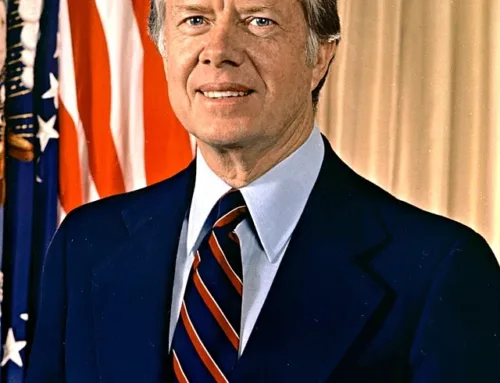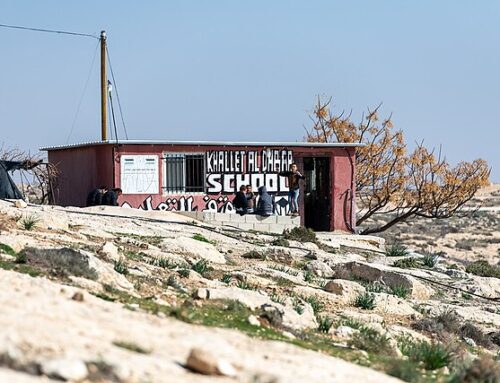 I picked up this book hoping to learn more about a figure whose name is invariably mentioned as prominent in the campaign to support the establishment of Israel in 1947-48, but about whom I knew little else. My curiosity has been partially satisfied – and there is no doubt that Silver is an intriguing and important figure, but I found the book somewhat problematic since its title is misleading. Although its first hundred pages cover Silver’s life until the mid-1940s, the book is primarily about Silver’s ideology and ideas, especially after May of 1948, and not really about “the Foundation of Israel.” In fact, only one chapter of 15 pages covers the 1947-48 period when the crucial decision for independence, with American support, was made.
I picked up this book hoping to learn more about a figure whose name is invariably mentioned as prominent in the campaign to support the establishment of Israel in 1947-48, but about whom I knew little else. My curiosity has been partially satisfied – and there is no doubt that Silver is an intriguing and important figure, but I found the book somewhat problematic since its title is misleading. Although its first hundred pages cover Silver’s life until the mid-1940s, the book is primarily about Silver’s ideology and ideas, especially after May of 1948, and not really about “the Foundation of Israel.” In fact, only one chapter of 15 pages covers the 1947-48 period when the crucial decision for independence, with American support, was made.Obviously author Ofer Shiff, a professor of history at Ben-Gurion University, had his reasons for choosing to structure the book this way. I think the main one was that he was intrigued by what could be called Silver’s alternative ideology of Zionism, which saw the Jewish state as more universalistic and more connected to a Jewish spiritual renewal than did the hard-headed and non-religious David Ben-Gurion. The two, in effect, engaged in a struggle for power over the leadership and direction of the Zionist movement immediately after the achievement of independence and Ben-Gurion, as the leader of the state, won handily and Silver was effectively marginalized. By the mid-1950s, though, he was re-established as a prominent Jewish leader and recognized as such by Israel, but never again had the political power he seemed to wield in 1947-48. He died in 1963, at the age of 70.
From today’s perspective, or at least where the battle lines for Israel’s future lie at this moment, Silver’s vision seems arcane and almost other-worldly. Silver himself was an amalgam of political perspectives unimaginable today, namely a Republican progressive, who often (but by no means invariably) criticized both American and Israeli leaders from the left on both domestic and international matters. But Shiff particularly focuses on what he calls Silver’s “American-Zionist agenda,” which Silver wanted to have equal weight with the “Israeli-Zionist agenda.” This was after he had championed (and lost) a “Diaspora-Zionist agenda,” in which he envisioned Jews in the Diaspora having equal weight with those in Israel. This absolutely contradicted Ben-Gurion as an ideologist, but even more so as a power politician, and in retrospect was clearly destined to fail.
One element of the unequal Silver/Ben-Gurion struggle which Shiff delineates (probably the lesser one) is that Silver wanted American Jewry to serve as an interlocutor between the newly-established State of Israel and the U.S. Government. This, of course, was anathema to Ben-Gurion and probably all of the new state’s leaders, and never got off the ground. Obviously, the current configuration in which Israel demands unconditional support from American Jewry, with no input into Israel’s policies, is a reflection of Ben-Gurion’s victory.
But Silver’s larger ideology was his understanding of Zionism’s universality, again a point of view opposite those of the leaders of the Yishuv and later of the State. Silver, though born in Europe, was deeply imbued with the social mission of Reform Judaism, derived from Judaism’s own Prophetic tradition. He believed that Judaism, with the State of Israel as one aspect of it, must continue to reflect this vision, that would be embodied in a Jewish state, but not solely in that. He saw Israel’s independence as an essential step in freeing Jews from the persecution and defensiveness from which they had suffered but, more importantly, as liberating the Jewish people to introduce or implement universally their Prophetic tradition.
In some ways, this resembles the views of Ahad Ha’am, the early Zionist leader who opposed Herzlian political Zionism with a view of Palestine as a “spiritual center” for the renewal of Judaism, though Silver’s vision was broader. Shiff does not pursue this relationship, mentioning Ahad Ha’am only once. Silver, in any case, was a dyed-in-the-wool political Zionist when it came to establishing Israel as an independent political entity.
Shiff’s book is primarily an intellectual biography and analysis of Silver, spending comparatively little time on the political struggles around the establishment of Israel. He portrays Silver’s greater importance as an originator and exponent of an idealistic and universalistic Zionism that seems, at least to me, so visionary and impractical in the real political world that it scarcely can be taken seriously. But perhaps, with the perspective of the last 67 years, I’m too cynical.
I cannot end without comparing the portrayal of Silver in the recent book by John Judis, Truman, American Jews, and the Origins of the Arab-Israeli Conflict, which I reviewed here. Judis portrays Silver as perhaps the most hardline fighter in the American arena for a Jewish state, though contrasting that in passing with Silver’s other progressive ideals. By contrast, Shiff emphasizes Silver’s idealism and does not really consider his attitudes towards Palestinian Arab aspirations.
This is really a book primarily for those interested in the intellectual history of American Jewry and one of its foremost thinkers. My impression, again perhaps too cynically, is that Silver’s vision of Zionism has had little resonance in the dovish side of American Jewry today, let alone its mainstream.






Abba Hillel Silver certainly was a “good Jew.” However, it did not suffice for Jews in Palestine who, on one hand were eager to see American olim which, in large, failed to show up. On the other hand, I believe that the Zionist leaders in the Yishuv had a different understanding of the problem.
Aliyah and saving European Jews were identical in the minds of the the Zionist leaders of the Yishuv. Certainly, it was also a goal of Zionists in America, but for many reasons it wasn’t the same primal urge, perhaps because the Yishuv came from the same places where the holocaust was underway more recently.
Another aspect of the division between American Zionists and the Zionists on the ground was the meaning of Zionism itself. For instance, most Americans thought of the General Zionists as Zionists in general. In the Yishuv, The General Zionists were one among many Zionist parties, and not a particularly popular one at that time, and no longer exists in Israel. In the U.S. it is the ZOA, which again implies a kind of universality but is ideologically rightwing, led by a rightwing president for many years, Morton Klein